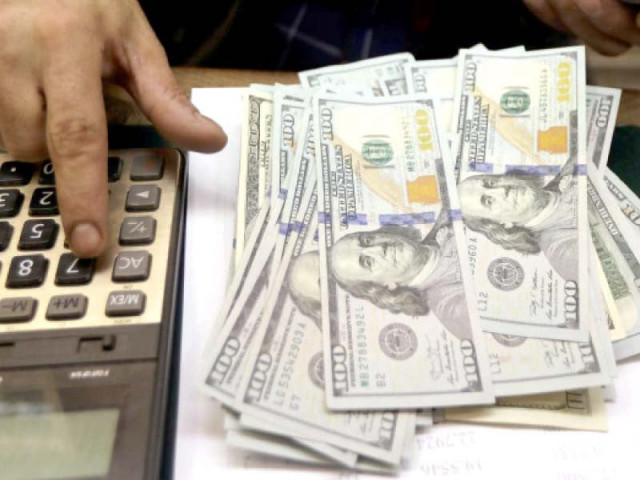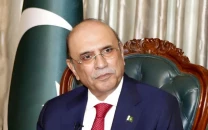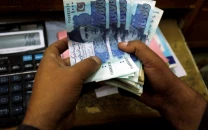Rebasing of economy pays dividend to govt
Changed methodology helps jacked up growth rate to 5.6%

Pakistan on Thursday approved to add Rs3.1 trillion value to the country’s economy through an increase in the coverage of economic activities and a changed methodology that expanded the size of the economy to $347 billion and jacked up the growth rate to 5.6% in the last fiscal year.
At $347 billion, Pakistan’s standing among world economies has improved to 35th -- below Denmark -- which has $355 billion worth of economy size.
The decision to rebase the economy from fiscal year 2005-06 to 2015-16 also resulted in a reduction in the public debt burden but sank further the tax-to-GDP ratio. The Federal Board of Revenue’s (FBR) tax-to-GDP ratio now dropped to mere 8.5%.

In addition there was a notional dip in the spending on health and education that was already on the lower side compared with the global standards.
Pakistan readjusted the methodology and coverage scope after a gap of nine years. The old base year methodology was implemented in 2013. The rebasing exercise has enhanced the coverage of economic activities, and improve the estimation methodologies and sources of data.
The National Accounts Committee (NAC) approved the change of the base year to calculate the value of the goods and services produced in the economy from 2005-06 to 2015-16, known as the rebasing of the economy.
As a result, the value of the economy that was estimated at Rs27.4 trillion in 2015-16 has now increased to Rs30.5 trillion, according to a statement issued by the Planning Ministry after the meeting. This shows that in the previous base year of 2005-06, the economy was underestimated by 11.3%, said the ministry.
As a consequence, the rupee value of the total goods and services produced in the economy in fiscal year 2020-21 is now estimated at Rs55.5 trillion. The expansion in the size of the economy would also show reduction in the budget deficit in terms of the size of the economy and provide room to the government to issue new sovereign guarantees that are also pegged with the size of the economy.
Read: Pakistan revises up 2020-21 ‘GDP to 5.37%’
In dollar terms, the size of the economy is now estimated at $347 billion in the last fiscal year. However, it is still lower when compared with the $357 billion size of the economy estimated during the year of 2017-18, which is the last year of the Pakistan Muslim League-Nawaz (PML-N) government.
Earlier, on the basis of the old methodology, the GDP size had been estimated at $298 billion in the previous fiscal year and at $315 billion during the last year of the PML-N’s tenure.
The per capita income also rose to $1,666 in the last fiscal year – up from $1,543. However, it is still lower than $1,768 per person estimated during the last year of the PML-N government.
In a big sigh of relief to the government that is reeling under heavy debt burden, the rebasing exercise has reduced the public debt-to-GDP ratio from 83.5 to 71.8% for fiscal year 2020-21. But there is no reduction in the public debt, which remains at Rs39.9 trillion by June 2021.
There is also 14 percentage points reduction in the total public debt and liabilities that will now be shown at 86% from 100% under the old methodology. But the total public debt and liabilities remained at Rs47.8 trillion by end of June last year.
The FBR’s tax-to-GDP ratio is now 8.5% as against 9.6% under the old methodology. About Rs556 billion worth of goods have been added in the base value of the agriculture sector, which still seems on the the lower side as the Pakistan Bureau of Statistics (PBS) did not conduct fresh livestock census.
Read More: China resumes work on Dasu Hydropower Project
An addition of Rs631 billion is made in the base value of the industrial activities but the major increase of Rs1.9 trillion is made in the value of the services sector. The maximum increase has been witnessed in the subsector of wholesale and retail. Consequently, the share of agriculture in the GDP rises from 23 to 24%.
The industrial sector’s share has shrunk to just 19.5% from 20.9%, showing de-industrialisation in the country. The share of the services sector has increased from 56 to 56.6%. Also, there has been over 16% reduction in net primary income, to which the State Bank of Pakistan (SBP) had objected to during the meeting.
GDP Growth rate
As per the new methodology, the economic growth rate for the last fiscal year 2020-21 has been increased to 5.6% from 3.9% as per provisional estimates, which was the highest in past 14 years. Even at the old base year, the GDP growth rate was 5.4% due to incorporation of final data of the LSM and agriculture sectors.
For the first year of the PTI rule, the GDP growth figure is also adjusted upward to 3.1% from 2% and for the second year (2019-20) the contraction figure is now further revised downward to 1% negative growth.
However, the GDP growth rate for fiscal year 2017-18 – the last year of the PML-N rule – was also revised upward to 15-year high of 6.1% from 5.5%, according to the National Accounts Committee.
Read Also: Minister vows to provide maximum relief to ‘most affected salaried class’
The agriculture sector growth rate is adjusted at 3.5% from 2.8% in fiscal year 2020-21. But the industrial sector growth is revised downward to 7.8% from 9% and the services sector growth estimated are adjusted upward to 5.7% from 4.9% for fiscal year 2020-21
The Planning Ministry said that since 2020-21 was the recovery year after Covid-19 so all the industries showed impressive growth due to low base. The agriculture sector registered the growth mainly because of increase in wheat production, maize, rice and sugarcane.
Meanwhile, Federal Minister for Planning and Development Asad Umar said the government has revised up its economic growth rate for 2020-21 to 5.37% from 3.9%, said.
"The growth in 2020-21 was 5.37%," said Asad Umar in a tweet, adding the National Accounts Committee (NAC) approved the revised estimate of GDP growth.



















COMMENTS
Comments are moderated and generally will be posted if they are on-topic and not abusive.
For more information, please see our Comments FAQ